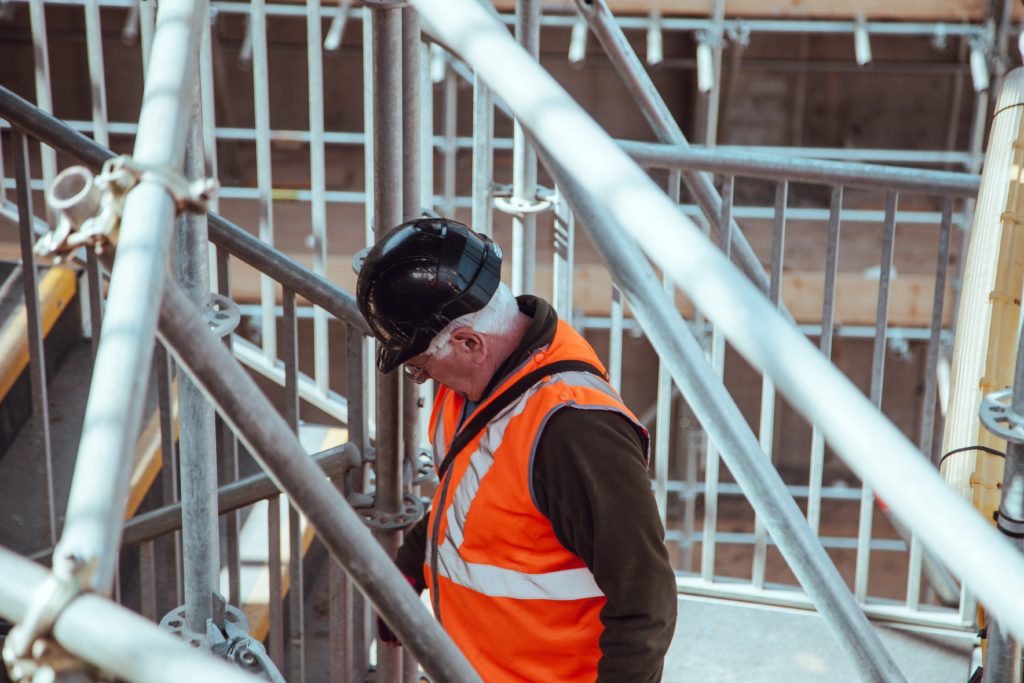
Although summer is the best time of year for construction, with fewer weather-related obstacles to worry about, there is still plenty of work getting done during the long winter months. Snow and ice can’t stop the march of progress in New York City, and our inexhaustible construction workers are out there in the cold dark of a new year working on buildings and making repairs.
But there is a reason warm weather is better for construction—not only do snow and ice make the work harder, they also create much more hazardous conditions.
It is important for all construction workers to take precautions while working during the late autumn and winter. That means watching out for slippery surfaces, wearing warm clothing along with personal protective equipment, and following procedures specifically for cold weather. But site managers and construction company owners also have to make sure their workers are given a safe work environment to come to every day. When they fail to do this, construction workers can be seriously injured, and may be able to hold their employers liable for those injuries.
Construction Dangers in Winter
Construction worksites are among the most dangerous environments in the country, even in good weather! Poor weather and cold winter conditions can cause serious accidents for workers. Perhaps the biggest threat is from ice and snow, which makes the ground, platforms, and scaffolds slippery. The cold itself also creates dangers, such as hypothermia and frostbite.
Tools and machines used on construction sites pose their own dangers, particularly in cold weather. Any fluids used in machines, such as hydraulic oils, need to be rated for cold conditions so they do not freeze up during or before use.
Worker Responsibilities to Stay Safe
Construction workers are expected to take some responsibility for their own safety, particularly in weather where conditions can rapidly change. It is important that all workers wear clothes that keep them warm and dry; this includes insulated gloves and boots that are waterproof to keep hands and feet warm. Gloves are particularly important, as they keep a worker’s hands warm while allowing him or her to use tools and other items safely.
Workers are expected to watch for snow and ice build-up on scaffolds and ramps, and let a site manager know about these hazards so they can get cleared off. A worker who feels unwell due to harsh winter weather, with breathlessness, rapid heartbeat, and light-headedness, should stop work and let a manager know. It is important to take breaks and not over-exert oneself in the winter, as the cold weather can constrict arteries and increase the risk of heart attack.
Employer Responsibilities to Keep Workers Safe
Employers are also expected to take certain actions to make sure their workers have as safe an environment as possible during winter construction. This includes making sure routine inspections are performed—especially after weather events. For example, after a big storm, new snow and ice can change the weight of loose ground near the edges of a trench, creating a risk of collapse if not cleared.
Some protective gear must be provided by employers at a construction site, and site managers must be responsive to reports of unsafe conditions. If a manager is told that scaffolds have become icy, he needs to keep workers away from that area and ensure the ice is cleared off before the scaffolds are used. Failing to act on this information not only puts workers at risk, but can make the manager and company liable for worker injuries that occur.
Options for Injured Construction Workers
Construction workers who are injured on the job during the winter have the same options as those injured any other time of year—but weather can be a tricky issue when it comes to portioning blame. The good news is that workers’ compensation is awarded without regard for who’s at fault for an accident, so long as the injured worker was not using drugs or alcohol at the time. It doesn’t matter if someone slips on an icy ramp or is crushed by a malfunctioning piece of equipment while on the job—workers’ compensation should provide for that person.
When a construction worker is injured due to someone else’s negligence—especially a site manager or employer running the site—a civil lawsuit may be appropriate. Companies are not expected to control the weather, but they are expected to take reasonable action based on the weather. A site manager cannot control where snow falls or ice forms, but the manager can clear off snow after a storm, or use salt to keep platforms and walkways free of ice.
If you are a NYC construction worker who was injured on the job, talk to Wingate, Russotti, Shapiro, Moses & Halperin, LLP. We have top NYC construction accident lawyers who know labor law cold. For a free consultation, call us at (212) 986-7353 today. If there’s money available for you, we’ll go get it. You don’t have to worry about a thing besides recovering and having a happy holiday.